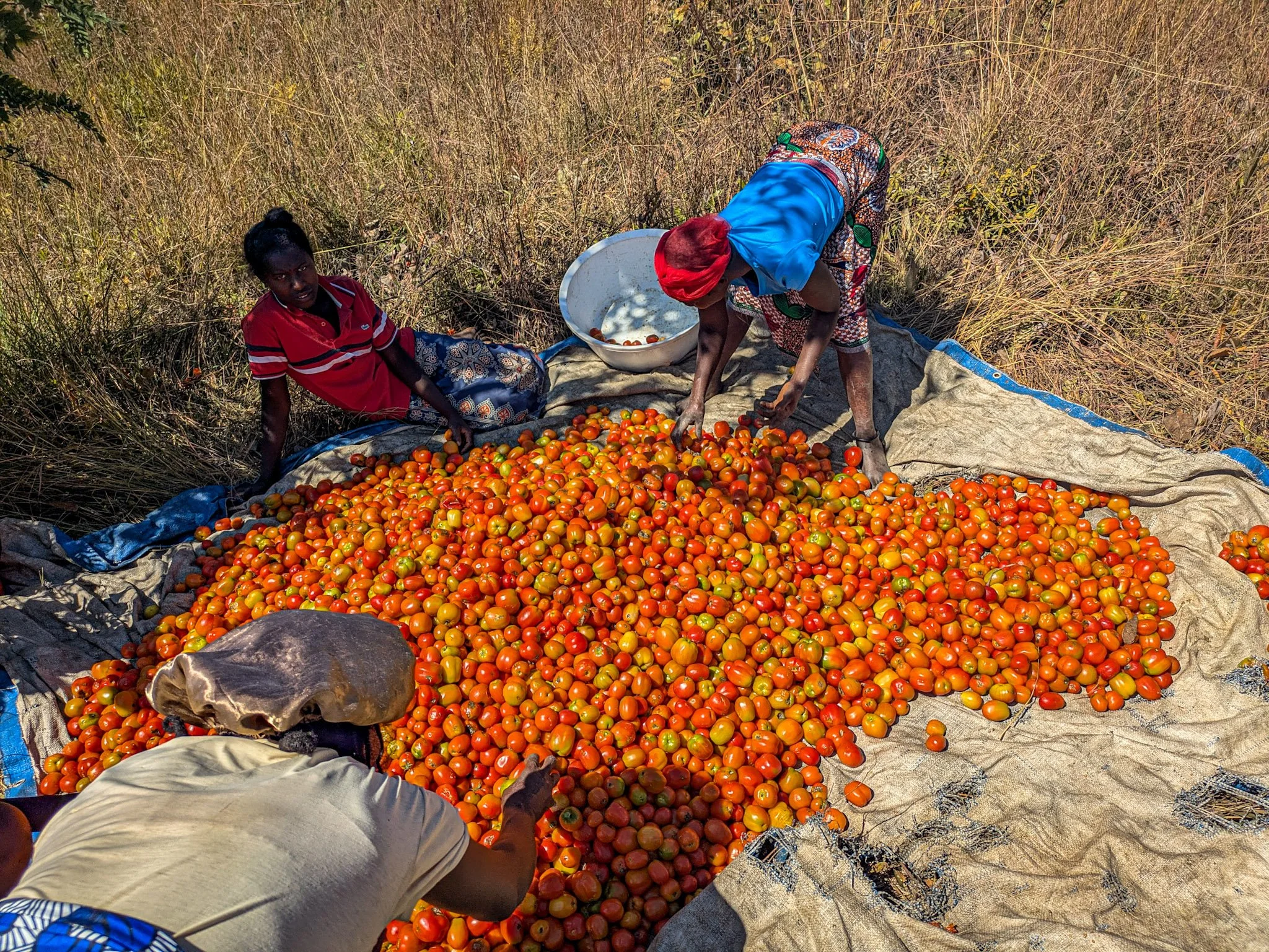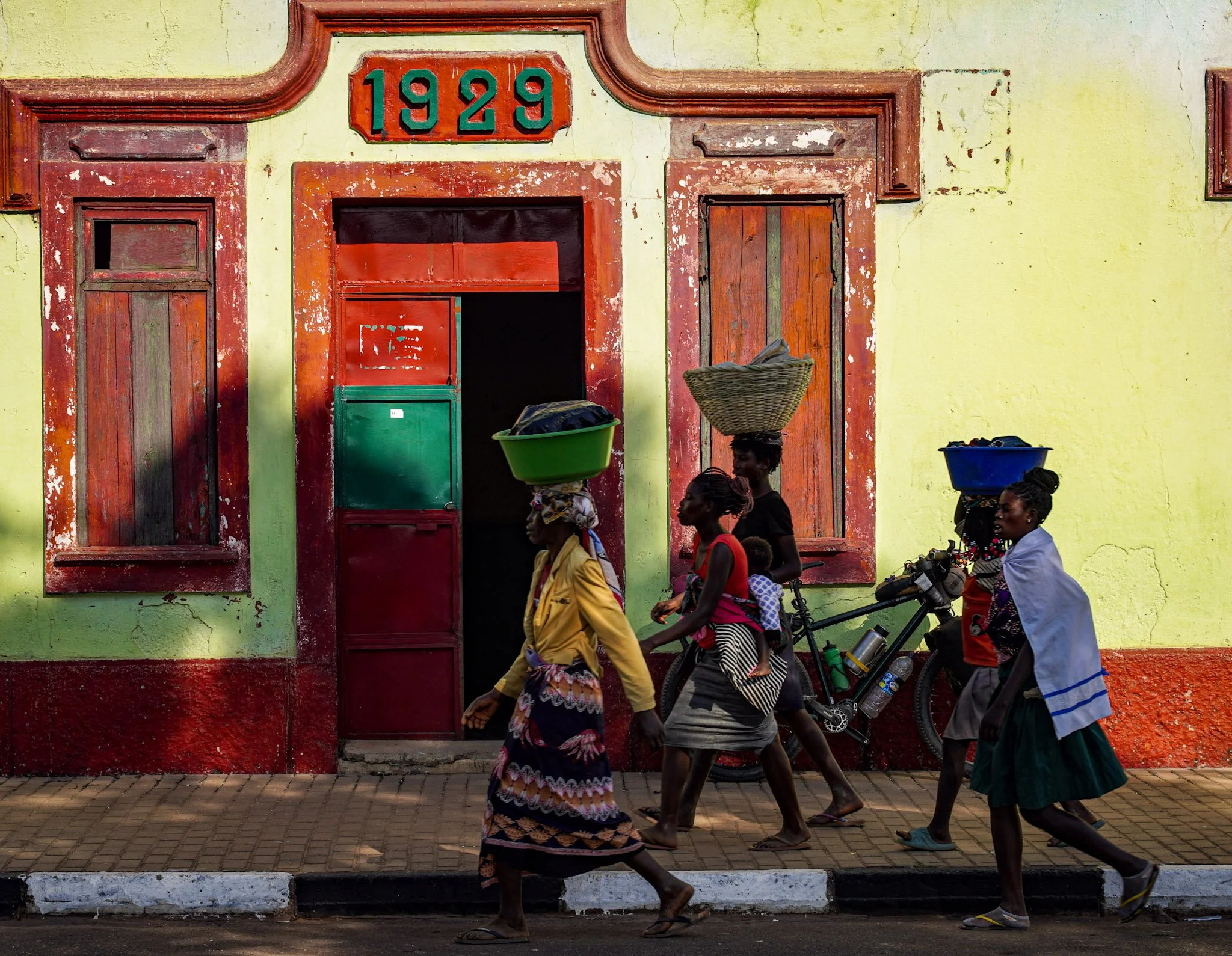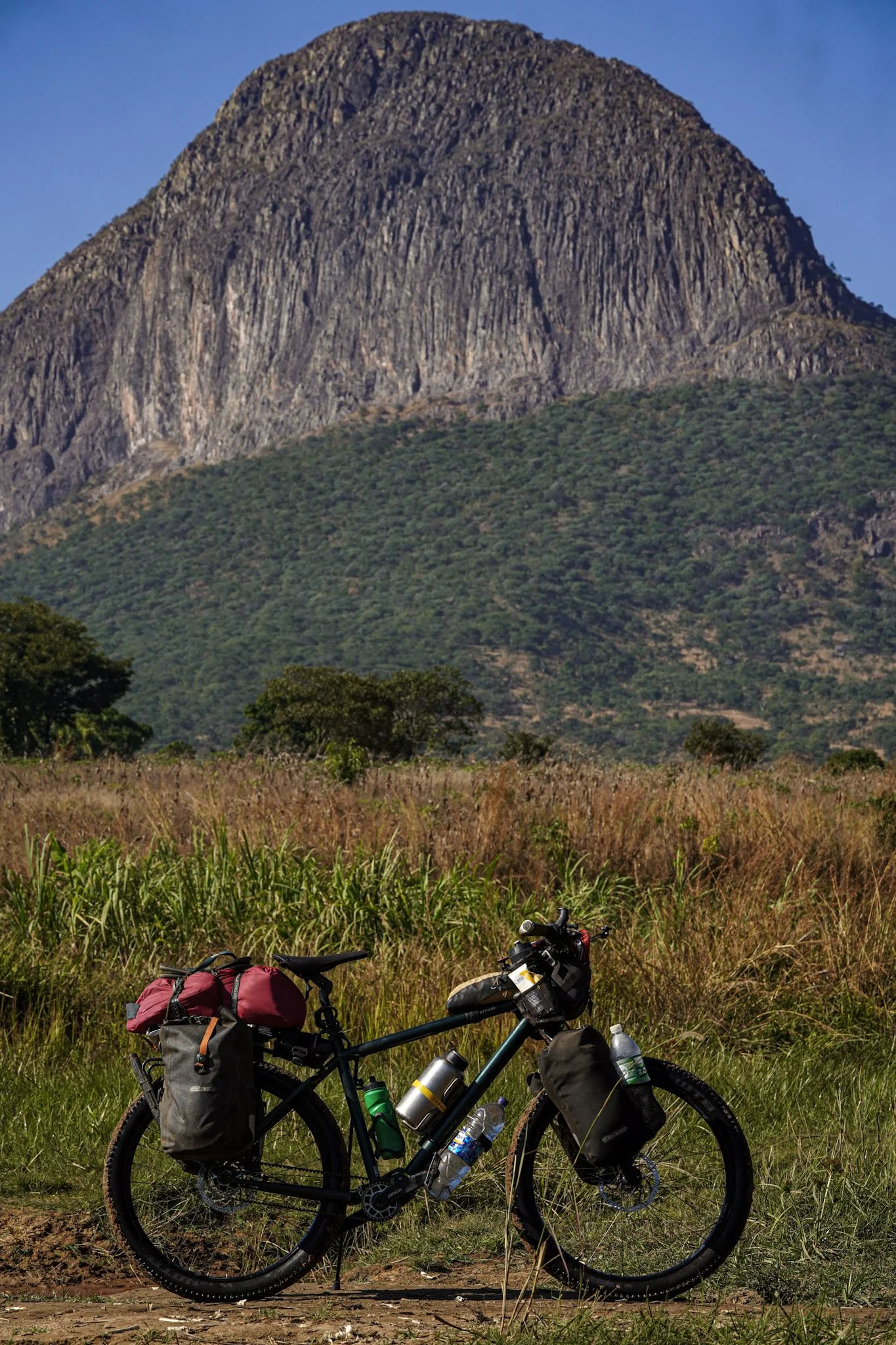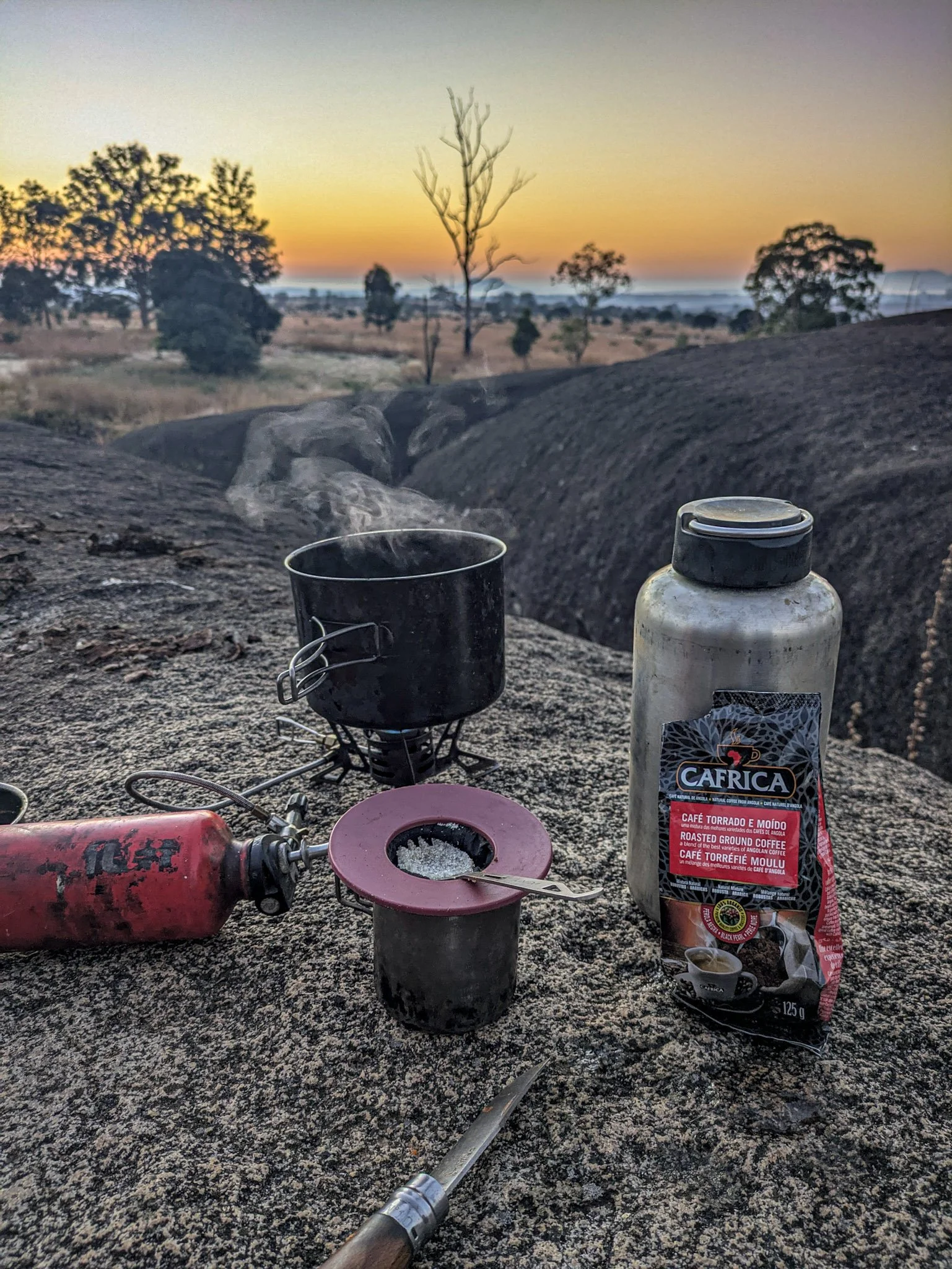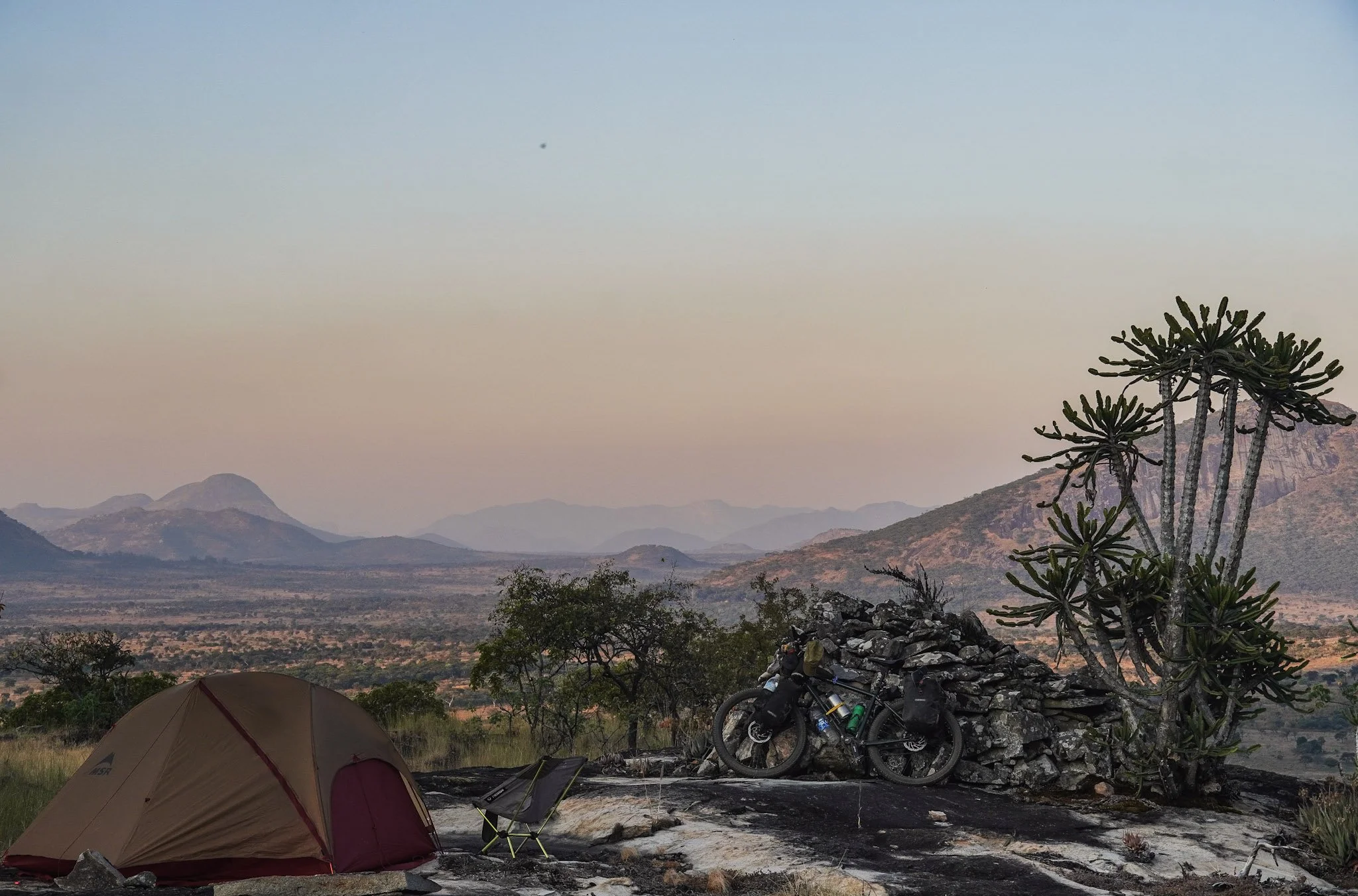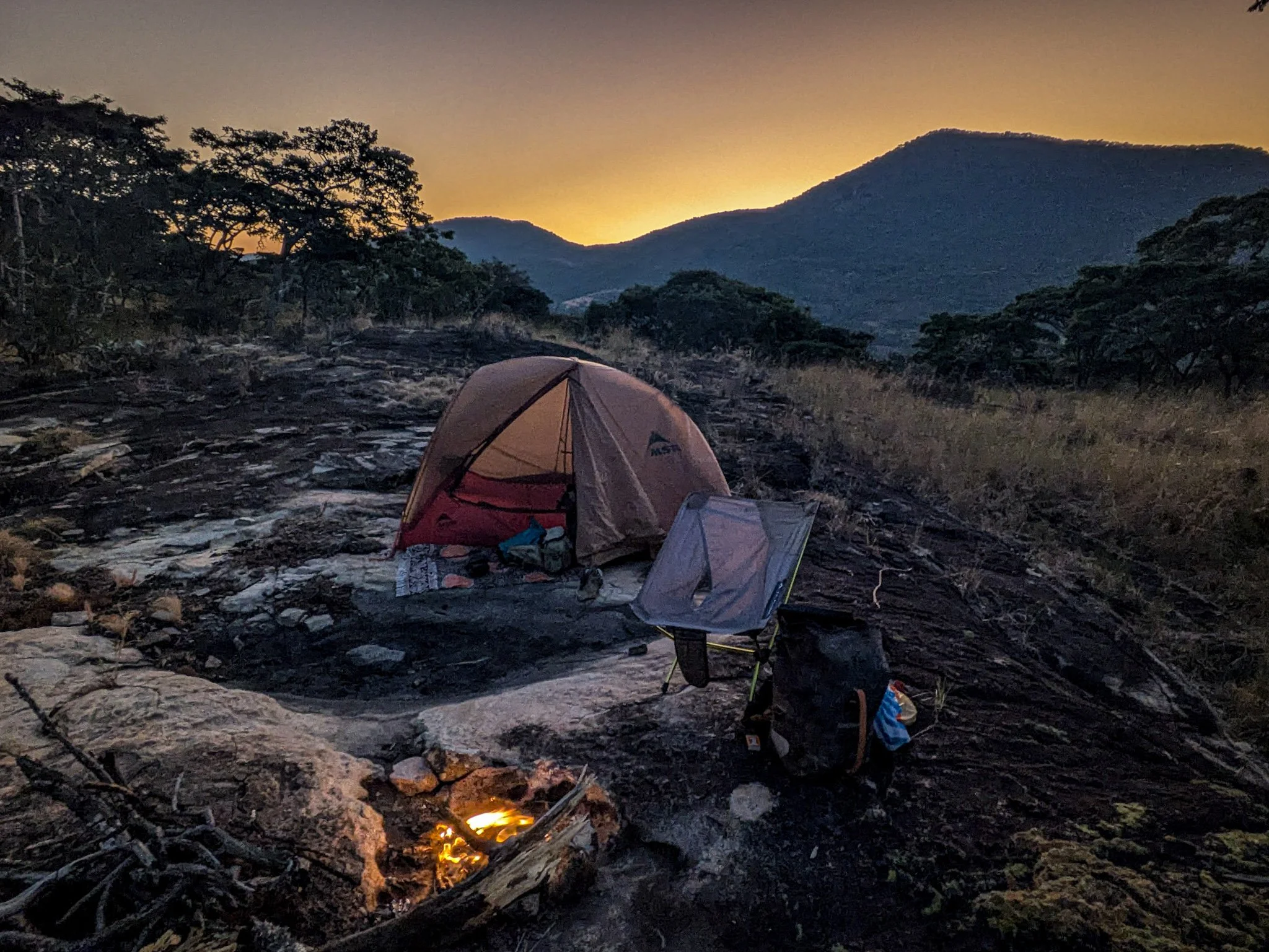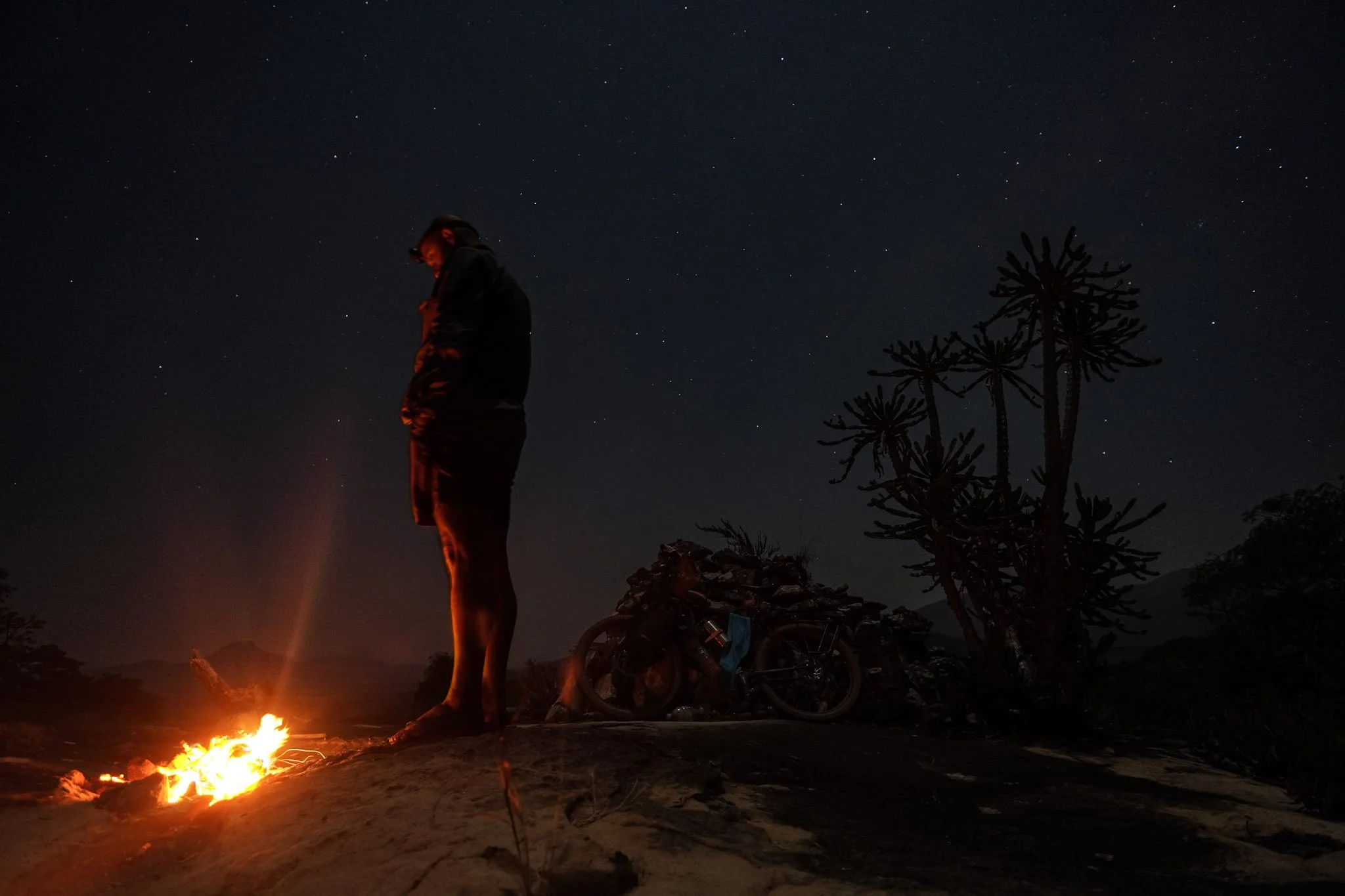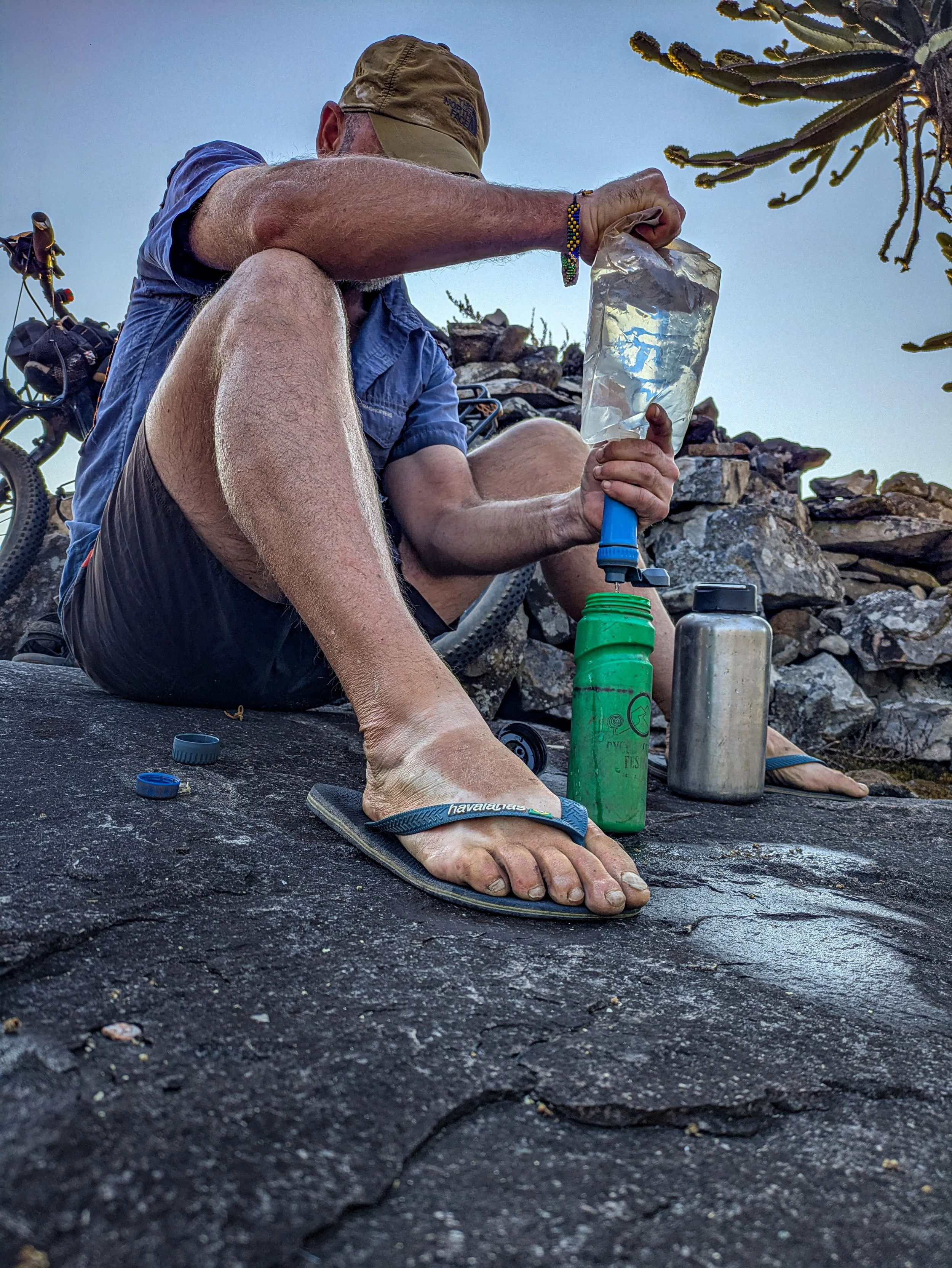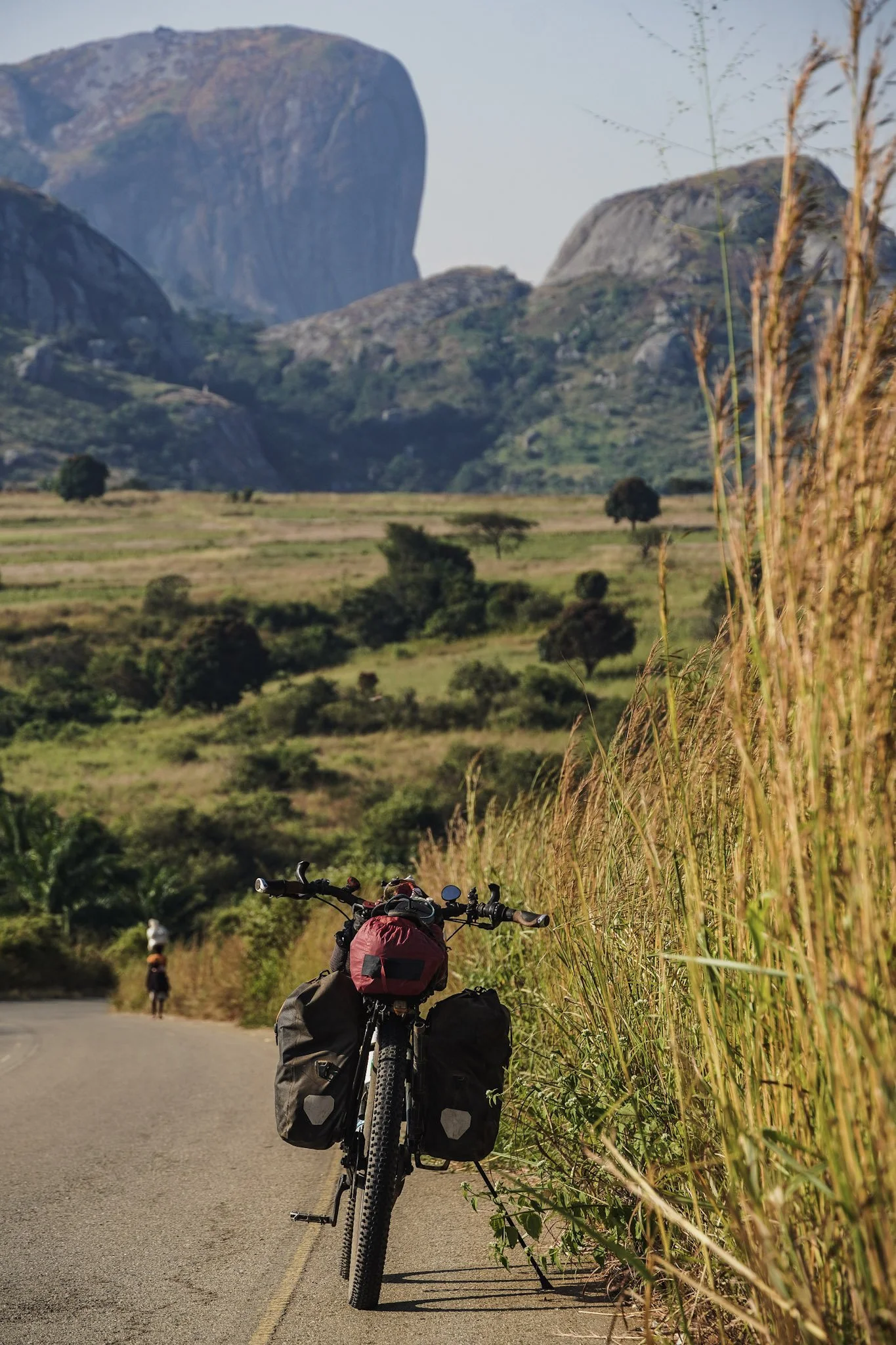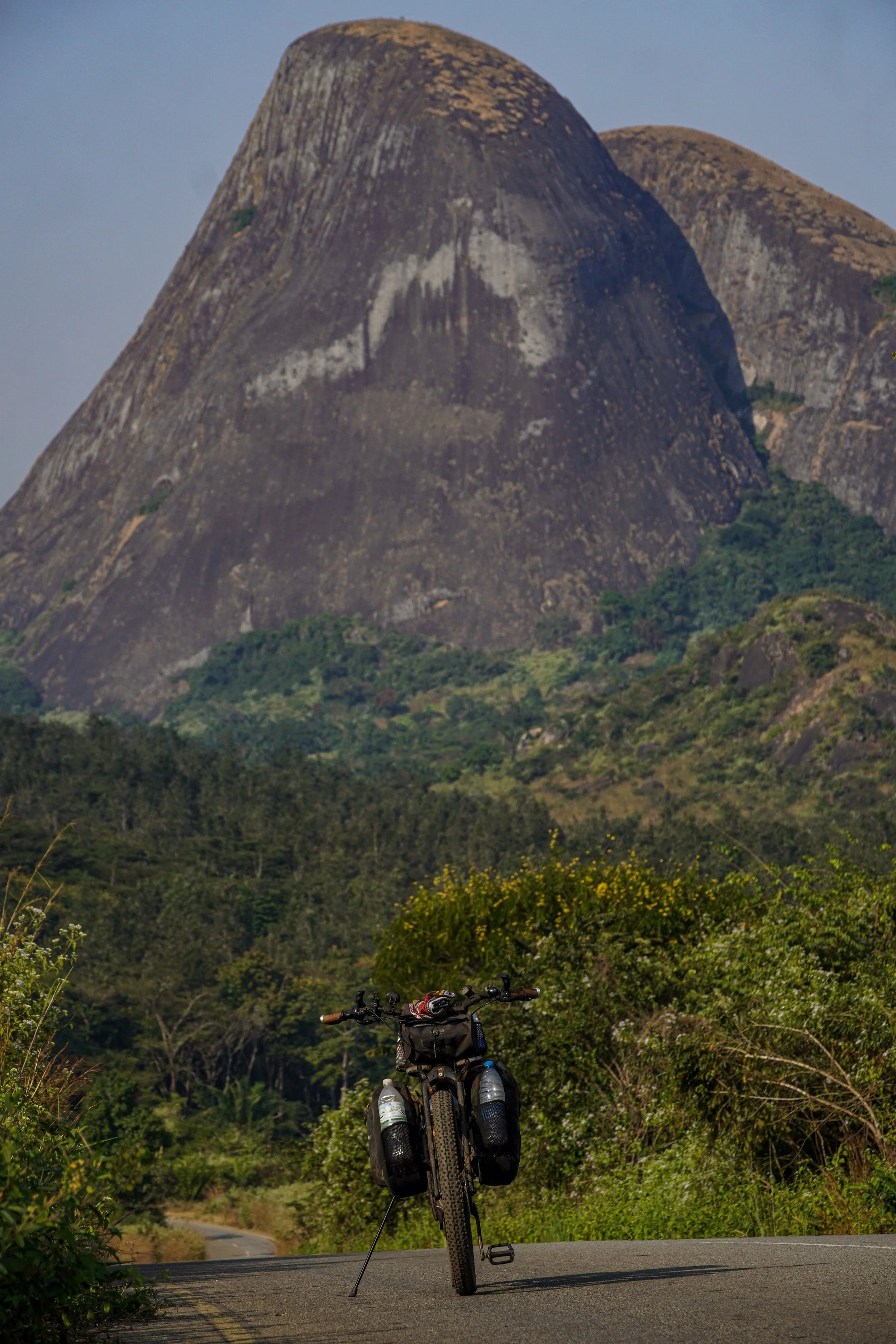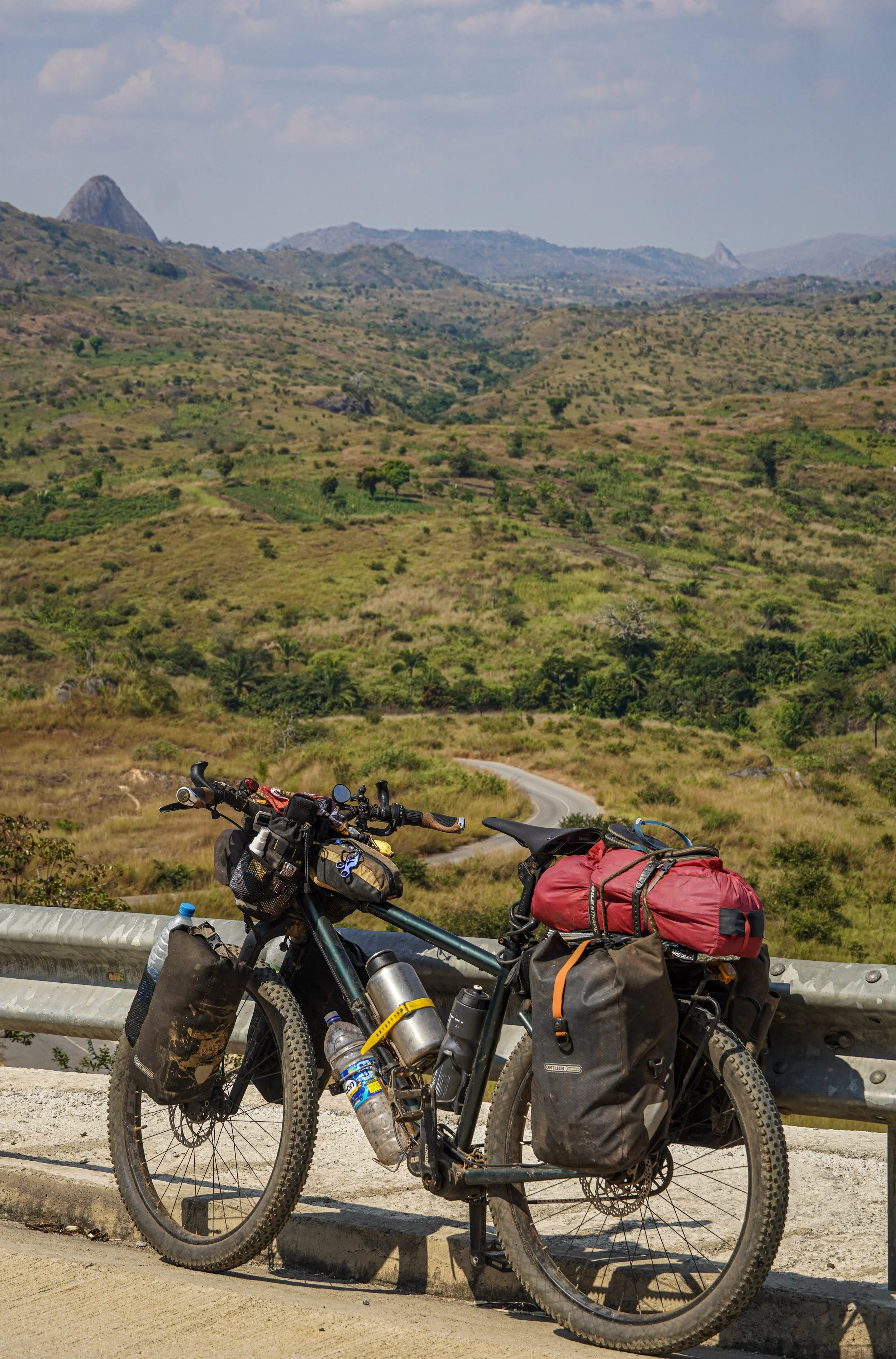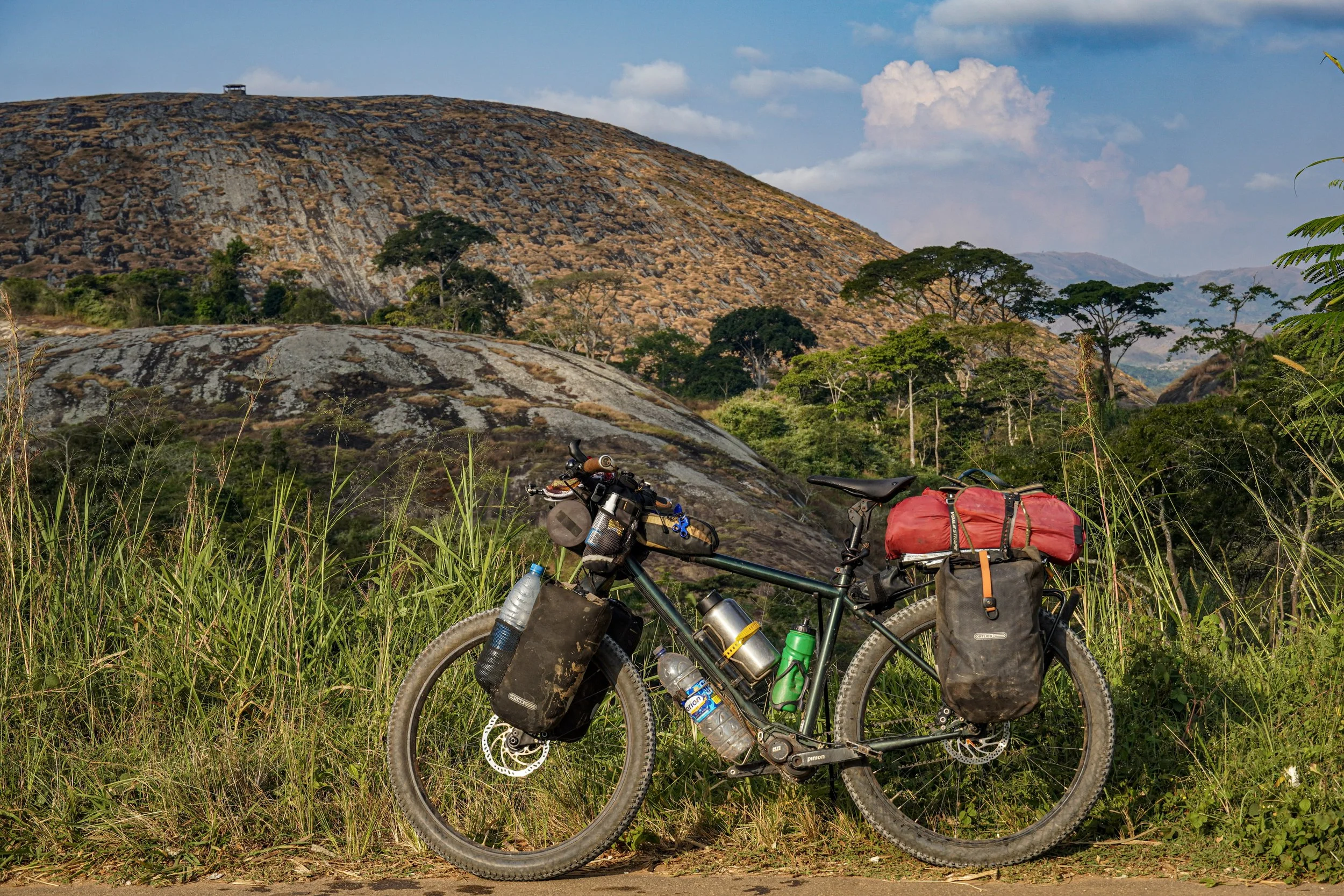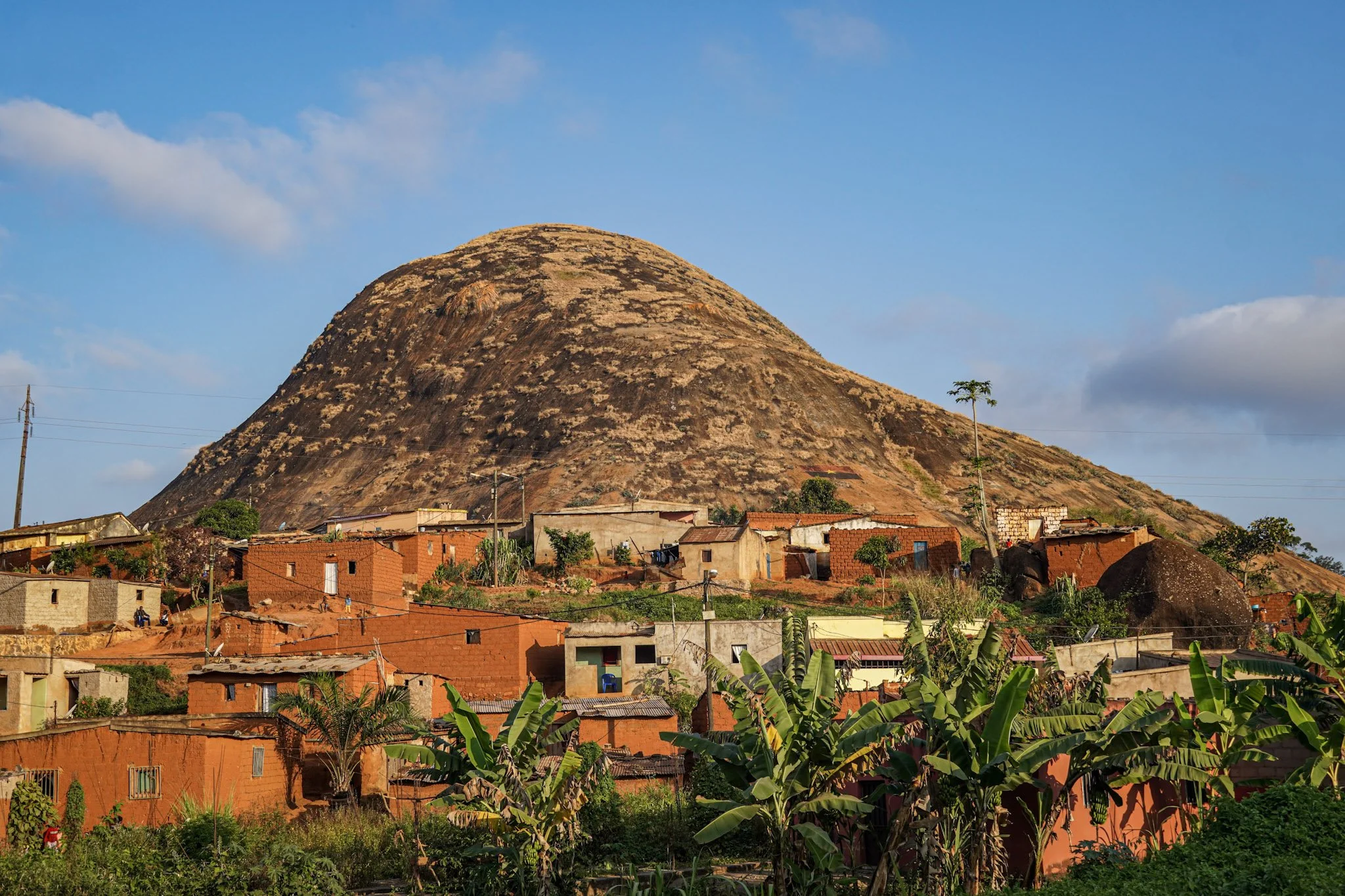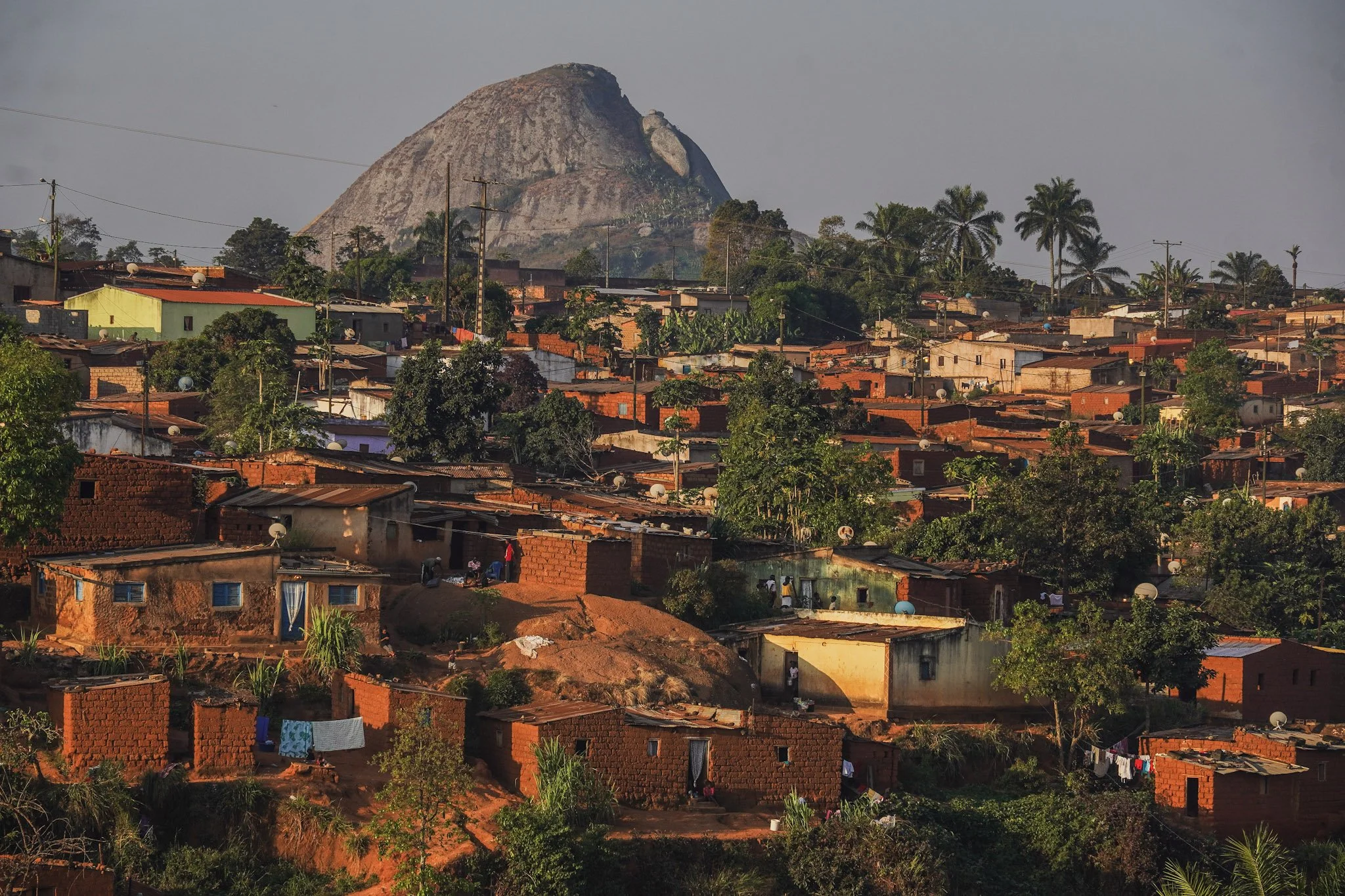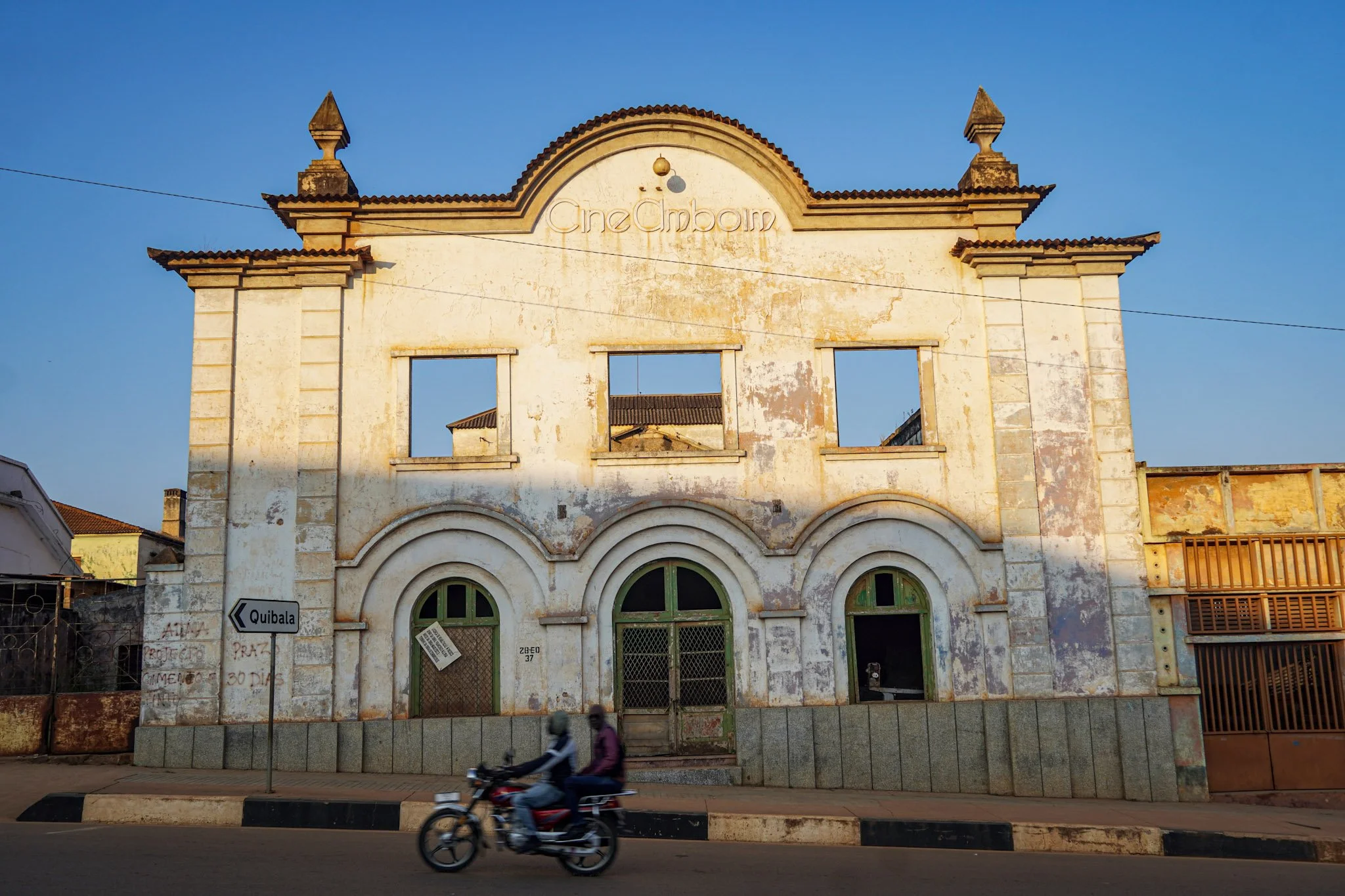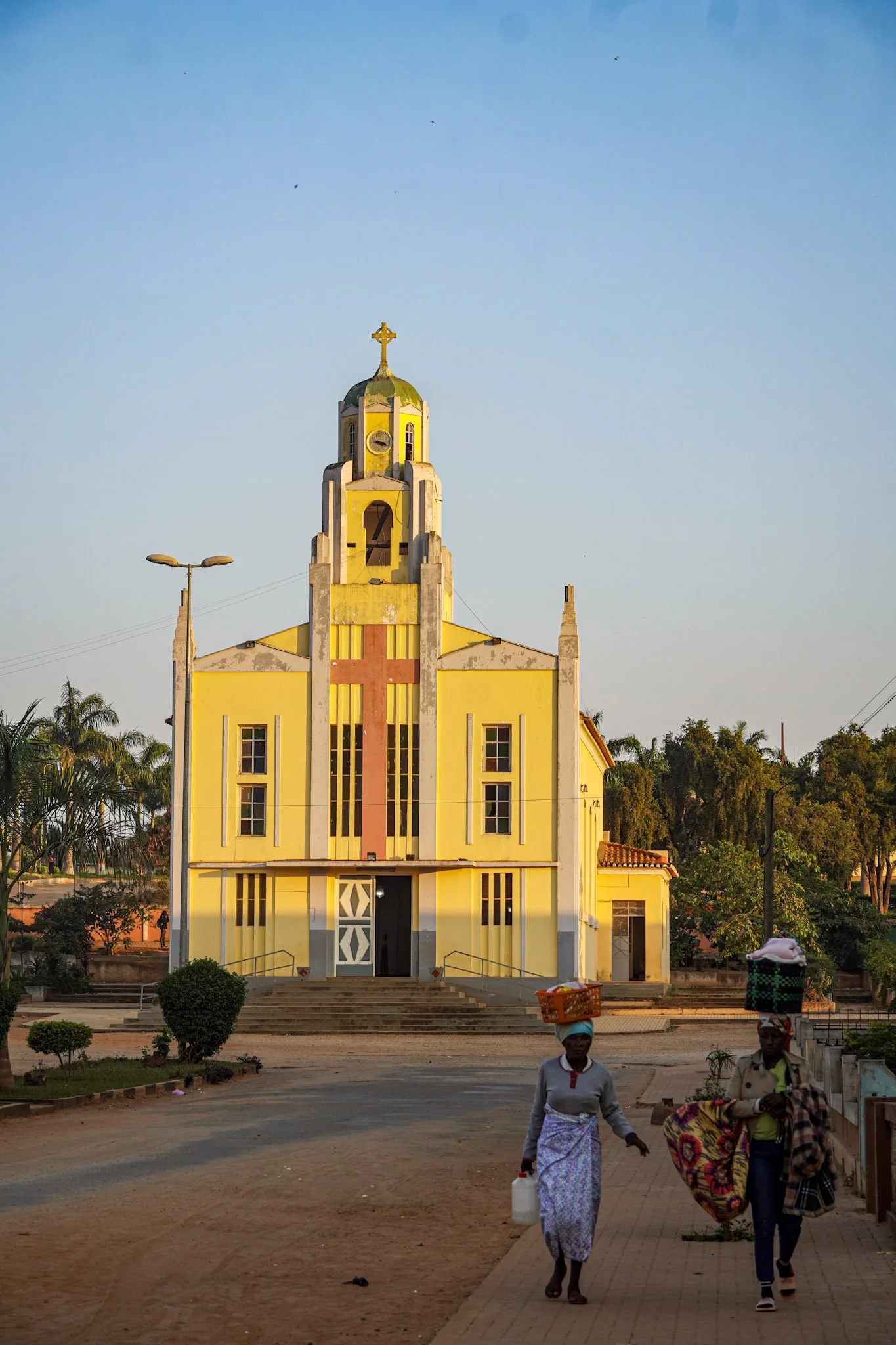Across Africa Part 10: Granite Giants Of Central Angola
Police escorts can be a pain when bike touring. In countries or regions where the safety of foreigners is a concern for authorities, they can turn freewheeling freedom into a mix of fear and frustration as you question how long they’ll stick around — and whether they’re really necessary.
Such was the scene as I rode out of Cuito after five nights rest. The police had been aware of my presence when I arrived in this provincial capital, stopping me at a traffic light and asking where I planned to stay. I complied with their request - informing them of when I would leave and the route I planned to take - but hadn’t anticipated an escort as I left the city and continued my journey through central Angola.
The escort didn’t last long, largely because I insisted it wasn’t necessary, but the police in the neighbouring towns and provinces were well aware of my presence over the following days as I rode through a beautiful, undulating landscape of granite boulders.
Now that I had an extra 30-day stay in Angola - which was never guaranteed when I first entered the country - it gave me more time. I had already changed my original flight date from Luanda while in Zambia - putting the date back to the end of June (at first when I arrived in Kenya back in December it was mid-April!). Now that I had up until the 11th of July to stay in Angola, I decided that changing it again to give me another 10 days in a country I was really enjoying, was worth the ticket changing fee (about £100).
Angola is divided into 21 provinces. Bie, Huambo and Cuanza Sul - shaded in red, are where my journey took me over the following week.
Riding west from Cuito. About 40km and the police had decided to turn back. After 1000km of cycling in Angola, this was the first real tarmac I had cycled on in the country. The elevation in Bie Province rises up close to 2000m, so I expected some cooler nights over the coming days.
Straight and undulating roads. Many of Angola and southern Africa’s major rivers begin here in Bie Province, including the Cuanza, Cuito and Okavango - the latter of which flows south into Namibia and Botswana.
Tomato stop. Several women sort through tomatoes at the roadside ahead of transporting them to markets where they can be sold. It was rarely difficult to find tomatoes in Angola. My food pannier usually had several or more in as most lunches and evening meals I made included them.
Far less common to see were strawberries, sold in the smallest punnets I’ve seen.
Women walk past a colonial building in the town of Chinguar. The red and green colours here are those of UNITA, one of the two main political parties in Angola.
Chinguar turned out to have quite a lot of murals on its main street as I cycled through.
My first camp out of Cuito at around 1800m in elevation.
Hidden from the nearby road.
Second breakfast stop. I don’t know if there is a season for passion fruit, but whenever I saw them being sold on the roadside I usually stopped to buy and eat some. One passion fruit cost 50 kwanza - about £0.04.
So I happily ate 4-5 there and took another 5 or so with me.
The landscapes in the western part of Bie province are notably different. The elevation is higher and gone are the miombo forests and grasslands I was cycling through further east.
A good feed for around £2, although this was in a small town where the police had obviously been informed there was a foreign cyclist likely to be passing through. They decided to sit outside and wait for me to finish eating, then follow me for a few kilometres before I explained that I didn’t need them to be following me. There was never any aggression or demands for money from me, nor did I ever feel unsafe when police were not around. I came to realise that as foreign visitors - especially by bicycle - are rare in Angola, there was a heightened sense of wishing to protect them.
Appearing on the horizon later that day was one of Angola’s most prominent landmarks. At just over 2000m in altitude, Mount Luvili is one of the world’s largest monoliths.
And features on the 1000 kwanza note.
A friendly time-waster. He’d been waiting for me the evening before, having probably been called by police in the last town that I was headed his way. I hadn’t told the police I would be camping in the bush that night. He asked for me to wait while his superior came. I waited 30 minutes and got the feeling that I could be waiting a lot longer, so gave him my number and explained that he could call me. Surprisingly this was met with no objections so I rode on.
Later that day I had turned onto a dirt track, so was surprised that even the police here in a small village were aware of my presence in the neighbouring province. I just remained patient and polite, insisting I was fine. I knew that if I told them I planned to camp alone in the bush they would consider it to be unsafe, but that’s really because the concept of camping alone is so strange here. So I simply said I was riding to the next town some 60km away, even if that was likely to take 4-5 hours (something I would never do shortly before sunset).
About 5km away I passed a large granite boulder, of which the region has many. I climbed up its side and realised the top would be a great place to camp.
Morning coffee before sunrise.
The large granite boulders, for which many parts of central Angola are known for, turned out to be excellent places to camp - assuming their sides weren’t so steep that I couldn’t walk and push my bike up. This was the first of many I camped on.
Happy to be back on dirt tracks. Whenever I saw an opportunity to detour/deviate from the main roads - assuming the tracks were going roughly in the direction I wanted to - I took them.
Out here it’s mostly local motorbikes and people walking. The public transport system in Angola is very limited as far as I could tell, with transport only really existing between major towns.
Another lunchtime favourite - avocado and tomato sandwiches. Bread is a staple in Angola, and as easily found as tomatoes.
Burning season. The start of the dry season is often a time when vegetation is burnt.
Another great camp - one of the best on this entire trip. I followed a small footpath from the main road for several hundred metres, and was about to turn back when I couldn’t find anywhere flat, but pushed on through some woodland to this exposed rock, revealing a beautiful view out over the landscape below.
Angola was in fact by far the best country on this tour for wild camping.
Shower with a view.
Another advantage of camping on the granite was that I could have a fire without worrying about burning any vegetation around.
The fire burnt all night. I was up before sunrise to film and watch it, even joined a short time later by several men walking up from a nearby village towards the road I had come from. While I always tried to ensure I camped in places that were hidden and people wouldn’t see or find me, I was usually accessing the places I camped by small tracks that had been created by people walking. The more remote I was the safer I often felt, although I much preferred if someone saw me in the morning before packing up than before I went to sleep. If I ever felt uncertain or in danger, I would usually not stay where I was, unless it was already dark. That didn’t happen during my time in Angola.
Angola and Africa at its most beautiful.
I continued to use my water filter throughout Angola, filtering the water I had filled up with the day before for camping. This particular filter from Platypus claims to filter 3 litres of water per minute, which is an exaggeration. I found it more like 1 litre a minute, which was still fine. It is lightweight (65g) and easy to clean.
Best when still hot and fresh, as it was here. One roll cost 100 kwanza (£0.08). While I found Angola a little more expensive than travelling through East Africa, it was not nearly as expensive as I had read and was led to believe.
Home made bicycles/tricycles/scooters are popular in rural Angola.
The scenery along this stretch of newly paved road in the province of Cuanza Sul was amongst the most beautiful in the country.
Crossing numerous small rivers through a green and lush landscape.
With a fair bit of climbing. For most of the previous several months I had been above 1000m in altitude, but found myself descending to 500m before climbing back up to 1200m.
All worth it for the stunning scenery here.
When the surroundings are so beautiful I usually try to find somewhere to camp that reflects that.
An unfinished/abandoned brick building that stood alone on a granite boulder saved me.
Sitting alone like an island surrounded by high grasses and dense vegetation.
A memorable place to camp.
The beautiful landscapes continued the next day.
Which reminded me in parts of the Ethiopian highlands.
Back up at 1200m and approaching the town of Gabela.
Riding into Gabela. My Angolan friend/contact, who I had spoken to many times, but not actually met, had a place here for me to stay.
The town is surrounded by the granite bounders for which the area is famous.
Before the civil war, it was also the centre for Angola’s coffee growing industry.
I had no idea that up until 1975, Angola was the world’s 3rd biggest coffee exporter.
There has been some revival in coffee growing since the war. While there is no coffee-drinking culture in Gabela anymore, I was able to find some to buy.
500g of ground coffee for about £3.
Gabela was an interesting place to spend a few days. It had clearly been a place of prosperity in pre-war years, with many colonial-era buildings lining its streets, such as this cinema.
At the centre of Gabela stands its Catholic church.
I followed directions to a residential address nearby. A cleaner appeared with some keys shortly afterwards.
The house was empty and I had the place to myself for several days while I took a rest.
Although after a few days the tell-tale headache started one afternoon.
It continued overnight so I took a rapid malaria test first thing the next morning. The treble lines shown here suggested it was the same strain as I had before (falciparum) or a mixed infection. I double checked with another test to confirm. The result came back the same, so I didn’t feel any need to visit a clinic/hospital to check any further. I already had the medication to take, and hoped that by taking it earlier this time it would be sufficient to clear the symptoms and malaria from my system, although for the next 24 hours the cold sweats/headaches and fever reminded me that malaria is nothing you would ever wish to have.
Enjoyed this post? You can support my travels and ongoing content creation by clicking on the link below. It’s a great motivation to continue sharing. Thanks





